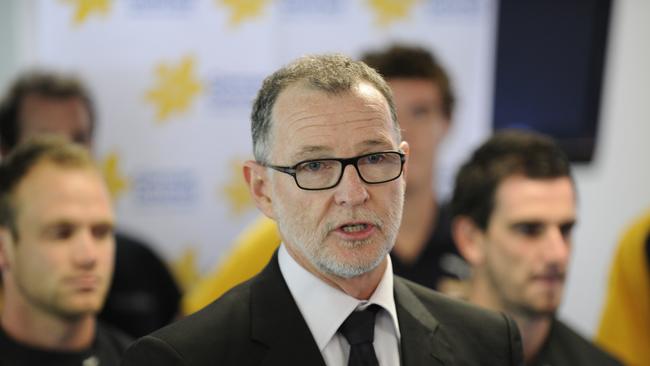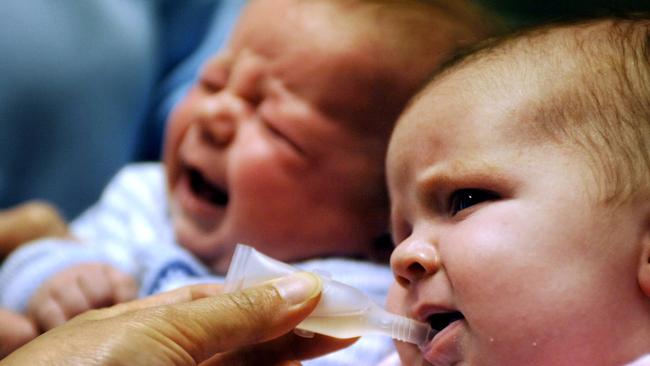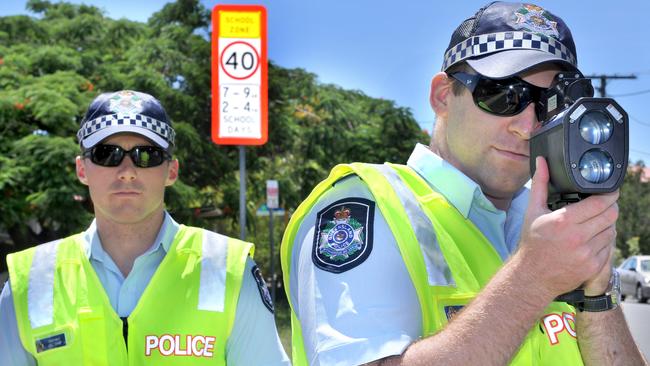How Australia’s public health programs saved 500,000 lives
More than half a million lives have been saved by ten public health programs that have changed the way we dress, drive, drink and relax, an astounding new tally shows.
Health
Don't miss out on the headlines from Health. Followed categories will be added to My News.
Exclusive: More than half a million lives have been saved by 10 public health programs that have changed the way we dress, drive, drink and relax, an astounding new tally shows.
Smoking-related deaths have been slashed by 500,000 by tobacco control, deaths on the road have been halved by road safety campaigns, and the number of babies born with neural tube defects has almost halved.
Immunisation programs have almost eliminated measles, rubella and meningococcal C and polio saving the lives of thousands of children a year and slashing the number of children hospitalised with rotavirus.
The Public Health Association will on Wednesday release the first ever tally of the outcomes of the top 10 public health programs as they warn spending on these successes has fallen from over 2 per cent of just 1.6 per cent of the health budget.
Every $1 invested in prevention can save up to $5 by preventing the need for spending on hospitals and medical care and we need to spend more on public health to rein in escalating health budgets, PHA chief Terry Slevin said.

He wants governments to commit to spending five per cent of the health budget on prevention or $8 billion a year, up from around $2 billion at present.
A comprehensive multipronged public strategy to contain obesity is needed including a tax on sugary drinks, campaigns to promote physical activity and education for the public about how to make healthy diet choices, he said.
“No significant public health measure has ever caused political harm to the decision-makers which approved it,” said Mr Slevin who claims the mission of his association is to make sure we all have “more birthdays”.
TOBACCO CONTROL
The tally of public health successes shows tobacco control has saved the most lives – over 500,000 early deaths have been prevented over the last 50 years and it is estimated one million teenagers did not take up smoking as a result.
Rates of daily smoking were at around 20 per cent of adults in 2001, but fell to under 13 per cent in 2016. Rates of smoking by young people aged 12-17 were at 11 per cent in 2001, had fallen to 1.5% in 2016.
The multi-pronged public health campaign included anti-smoking advertising, bans on smoking in public places, increasing taxes on cigarettes, funding to help people quit smoking and plain packaging.

IMMUNISATION
Free vaccines against 17 diseases have slashed deaths and hospitalisation rates and seen key diseases virtually eliminated.
Polio, rubella, measles, mumps and meningococcal C type have virtually disappeared.
Before the rotavirus vaccine was introduced in Australia in 2007 around 10,000 children under five years old went to hospital because of rotavirus every year and around 115,000 children required medical attention.
These numbers have been slashed by 70 per cent and this means around 7000 children who have avoided hospitalisation for gastroenteritis each year.

FOLATE
Neural tube defects such as anencephaly, spina bifida, encephalocoele affected 20 in every 10,000 births in Australia before a public education campaign in the 1990s encouraged women to lift their folate intake.
This resulted in a 30 per cent reduction in neural tube defects, a policy to include folate in bread in 2009 saw these birth defects declined by a further 14 per cent.
CERVICAL CANCER
Pap smears were introduced in 1991 and by 2002 had reduced the incidence of the disease by half (from 13 to 7 cases per 100,000 women) and reduced the death rate to 2 per 100,000 women.
The introduction of the cervical cancer vaccine in 2007 cut the prevalence of the HPV virus that causes the cancer from 28 per cent to below 7 per cent among women aged 18-24.
Death from cervical cancer is predicted to fall below 1 per 100,000 women by 2034.
SLIP SLOP SLAP
The Slip!Slop! Slap! campaign in the 1970s changed the way we dress outdoors and later evolved into the SunSmart campaign and is credited with preventing 12,000 melanomas.
For people aged under 40 the skin cancer rate has dropped, from 13 cases per 100,000 people in 2002, to about 9 in 2016.
The death rate for skin cancer in younger Australians has decreased from 0.7 deaths per 100,000 persons in 1997 to 0.3 deaths per 100,000 in 2016.
Every $1 invested by governments in SunSmart has returned an estimated $2.22 in healthcare cost savings.

CANCER SCREENING
Free mammograms for women over the age of 40 were introduced in 1991 and are estimated to have saved 13,000 lives over 20 years.
The national bowel screening program introduced for the over 50s in 2006 is forecast to save 35,000 lives over 30 years.
Every $1 invested by governments in bowel screening returned an estimates $11.40 in healthcare cost savings.
ROAD DEATHS
Road improvements, safer vehicles, lower speed limits, graduated licensing and a range of behavioural programs targeting drink driving, seatbelt usage and speeding have seen the rate of road deaths has been cut by half saving over 6000 lives.

GUN CONTROL
In response to the Port Arthur Massacre in 1996, the Howard Coalition Government introduced measures to restrict gun ownership and trade in Australia to legitimate professional or sporting purposes, and strictly limit ownership of automatic and semiautomatic weapons.
More than 1 million firearms have been handed in to buyback programs and the annual rate of total gun deaths fell from 2.9 per 100,000 in 1996 to 0.9 per 100,000 in 2016.
It has been estimated gun control has prevented 16 gun massacres.
HIV CONTROL
Safe sex campaigns, needle and syringe exchange programs subsidised access to HIV treatments has seem individuals with HIV live well into old age and has cut the risk of sexual transmission of the virus to zero where the treatments are used.
It is estimated that by 2020, over 2,000 men will avoid HIV acquisition and the cumulative health system savings from these infections averted is estimated at $82 million by 2020.
The lifetime medical and treatment costs for a person living with HIV are estimated to be $1 million so the savings for preventing lifetime costs from all infections averted until 2020 is therefore likely to be over $2 billion.
WATER FLUORIDATION
Around 89 per cent of Australians now have access to fluoridated drinking water which is estimated to reduce tooth decay by 26 per cent to 44 per cent in children and adolescents, and by 27 per cent in adults.
Greater investment in public health and preventive policies and programs is critical to avoiding exponentially higher costs down the road says the Public Health Association.
Many cancers can be checked through prevention and early screening beyond what has already been achieved, more can be done to bring oral care under Medicare system and the nation’s poor diet needs to be fixed.


